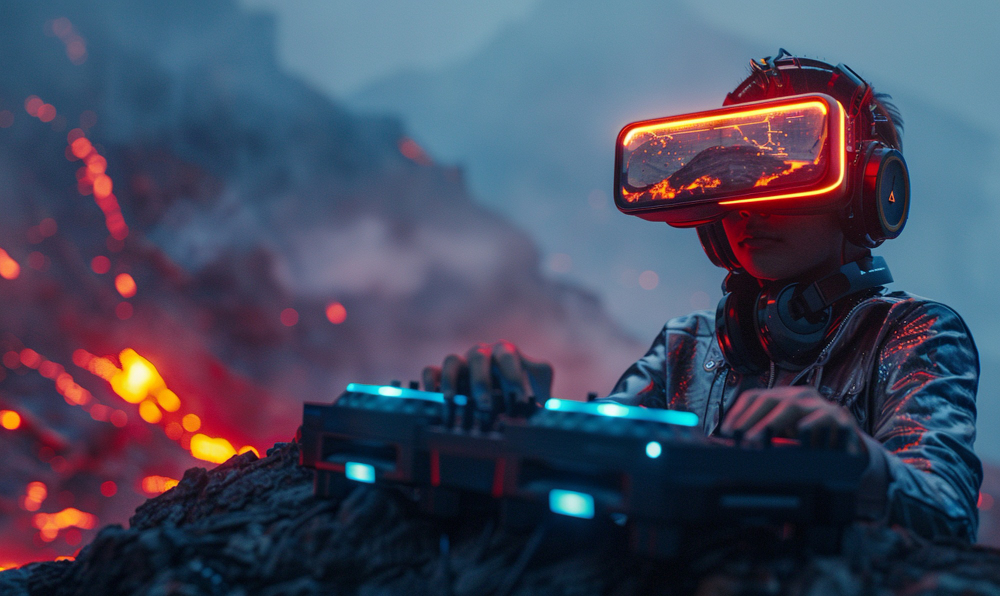Creating a 3D realistic model is a journey that combines innovative solutions with a deep understanding of hyperrealism. In today’s digital age, achieving lifelike 3D representations is more attainable than ever, thanks to advanced software tools like Substance Painter and Marvelous Designer. This blog will guide you through the essential techniques and tools needed to master realistic 3D modeling, focusing on achieving hyper-realistic results.
Understanding Hyper Realism in 3D Modeling
Hyperrealism in 3D modeling refers to the creation of models that are indistinguishable from real-world objects. This level of detail requires meticulous attention to every aspect of the model, from the initial concept to the final render. Achieving hyper realism involves accurately replicating the physical properties of materials, lighting, and texture.
What is a Realistic 3D Model?
A realistic 3D model is a digital representation of an object that is meticulously crafted to look as lifelike as possible. Ensuring that the initial rendered image is as clean as possible is crucial in achieving realism, as it reduces noise and enhances the final output. It involves detailed geometry, textures, and lighting to mimic real-world physical properties. By using advanced software tools like Substance Painter and Marvelous Designer, artists can add intricate details, such as wrinkles, scratches, and reflections, to achieve hyper-realism.
These models, often saved in formats like FBX OBJ MAX, are used in various industries, including film, gaming, and architecture, to create convincing and immersive experiences that are nearly indistinguishable from real objects or environments. Using maps for texturing, techniques to blend materials, and rigging for animations enhances the knowledge and skill required for creating these models. Additionally, elaborations on details, instances of use in multiple scenes, and ensuring rigged models for movement are essential. This practice saves time and improves the overall quality and realism of the 3D models.
Types of Realistic 3D Models
Realistic 3D models can be categorized into several types based on their application and complexity. Each type requires a unique approach and set of tools to achieve the desired level of realism.
1. Character Models
Character models depict lifelike humans or creatures, focusing on anatomy, expressions, and clothing. These models require meticulous detailing to capture the nuances of human or creature physiology, including realistic skin textures, facial expressions, and dynamic clothing. Tools like Substance Painter and Marvelous Designer are often used to enhance the realism of character models by applying high-quality textures.
2. Environmental Models
Environmental models recreate realistic settings, such as landscapes, cityscapes, or interiors, with accurate textures and lighting. These models are used in films, video games, and architectural visualizations to create immersive environments. Proper use of lighting, shadows, and detailed textures is crucial to make these settings believable and engaging.
3. Product Models
Product models are used in marketing and design to showcase items like furniture, electronics, or vehicles with high fidelity. These models highlight the product’s design, materials, and functionality realistically. High-quality textures and precise geometry are essential to represent the products and attract potential customers accurately.
4. Architectural Models
Architectural models represent buildings and structures with precise details and materials. These models are used by architects and designers to visualize and present their projects. They include detailed representations of both the exterior and interior, showcasing materials, lighting, and spatial relationships to give a realistic preview of the final construction.
Key Elements of Realistic 3D Models
- Geometry and Detail: The foundation of a realistic 3D model lies in its geometry. Detailed modeling of complex shapes, such as the human body or intricate objects, is crucial. Using software like ZBrush allows artists to sculpt fine details like wrinkles and scratches, adding to the realism.
- Textures and Materials: Texturing is the process of adding surface details to a model. Tools like Substance Painter are essential for creating realistic textures. This software allows artists to paint directly onto the 3D model, adding layers of dirt, scratches, and other imperfections that mimic real-world materials.
- Lighting and Reflections: Proper lighting is vital for realistic renders. Using render engines like V-Ray helps achieve photorealistic lighting and reflections. The placement of lights and their properties, such as intensity and color, can significantly affect the final output.
- Clothing and Hair: For models involving characters, tools like Marvelous Designer are indispensable for creating realistic clothing. This software simulates fabric physics, ensuring that clothes drape and move naturally. Similarly, tools for hair simulation add another layer of realism.
To access these advanced software tools, it is necessary to create an account by providing a valid e-mail address.

Innovative Solutions for Realistic 3D Models
To achieve hyper-realistic 3D models, several innovative solutions have emerged. These solutions not only enhance the quality of the models but also streamline the modeling process.
Substance Painter: Revolutionizing Texturing
Substance Painter is a game-changer in the world of texturing. It provides a comprehensive set of tools for painting, texturing, and adding details to your models. The software supports a wide range of file formats, including FBX, OBJ, and MA, making it versatile for different projects.
- Smart Materials: Substance Painter offers pre-built materials that adapt to the shape and details of the model, saving time while ensuring high quality.
- Real-time Feedback: The software provides real-time feedback, allowing artists to see how textures will look in the final render.
- Detailing: With features like particle brushes, artists can add intricate details like dirt, rust, and scratches with ease.
Marvelous Designer: Realistic Clothing Simulation
Creating realistic clothing for characters can be challenging. Marvelous Designer simplifies this process by simulating fabric physics. This software allows artists to design and customize clothing patterns, which can then be applied to 3D models.
- Fabric Simulation: Marvelous Designer simulates how different fabrics move and drape, providing realistic results.
- Custom Patterns: Artists can create custom clothing patterns, ensuring that the garments fit perfectly and look natural.
- Interactivity: The software allows for real-time interaction, making it easy to adjust and fine-tune clothing designs.
Lighting with V-Ray
V-Ray is renowned for its ability to produce photorealistic renders. This render engine offers advanced lighting and shading techniques that enhance the realism of 3D models.
- Global Illumination: V-Ray’s global illumination algorithms ensure realistic light interactions within the scene.
- Accurate Reflections: The software accurately simulates reflections and refractions, adding depth to the render.
- Versatile Materials: V-Ray supports a wide range of materials, allowing for realistic rendering of different surfaces.
The Process of Creating Realistic 3D Models
Creating a realistic 3D model involves several stages, each requiring careful attention to detail.
Concept and References
The first step is to gather references and create a concept for the model. References can include photos, blueprints, and sketches. Using references ensures that the model is accurate and detailed.
Modeling
The modeling phase involves creating the basic shape and geometry of the model. Software like Maya and 3ds Max are commonly used for this purpose. During this phase, it’s essential to focus on the overall shape and proportions.
Detailing and Sculpting
Once the basic model is complete, it’s time to add details. Tools like ZBrush are perfect for sculpting fine details. This stage involves adding intricate features like wrinkles, scratches, and other surface details.
Texturing
Texturing is a critical step in achieving realism, as it involves enhancing the surface texture and material characteristics of 3D models. Using Substance Painter, artists can add multiple layers of textures to the model. This process includes creating base colors, adding dirt and wear, and ensuring that the textures align with the model’s geometry.
Lighting and Rendering
Proper lighting is crucial for realistic renders. Using V-Ray, artists can set up lights and adjust their properties to achieve the desired effect. The final render should showcase the model in a realistic environment with accurate reflections and shadows.
Final Adjustments
The final stage involves making any necessary adjustments to ensure the model looks perfect. This may include tweaking textures, adjusting lighting, and refining details. The goal is to achieve a render that is indistinguishable from a photograph.
Tips for Achieving Hyper Realism
To achieve hyper realism, consider the following tips:
Use High-Quality References: Refer to high-resolution photos and blueprints to ensure accuracy. Accurate references provide a solid foundation for creating detailed and realistic models.
Pay Attention to Detail: Focus on adding fine details like scratches, wrinkles, and imperfections. These small elements contribute significantly to the overall realism of the model.
Experiment with Lighting: Proper lighting can make a significant difference in the final render. Experiment with different lighting setups to achieve the most realistic results.
Utilize Advanced Software: Tools like Substance Painter, Marvelous Designer, and V-Ray are essential for achieving realistic results. These advanced programs offer features that enhance the quality and realism of your models.
Practice and Patience: Achieving hyperrealism takes time and practice. Be patient and keep refining your skills, as mastery comes with consistent effort and learning.

Conclusion
Mastering the art of realistic 3D modeling involves combining innovative solutions with a deep understanding of hyperrealism. By using advanced tools like Substance Painter and Marvelous Designer, and paying close attention to detail, you can create stunningly lifelike models. Embrace these techniques to bring your 3D visions to life with unparalleled realism. Ready to create hyper-realistic 3D models? Join 3DAiLY today and transform your ideas into breathtaking reality with our cutting-edge tools and expert guidance. Sign up now and start your journey towards mastering realistic 3D modeling!



